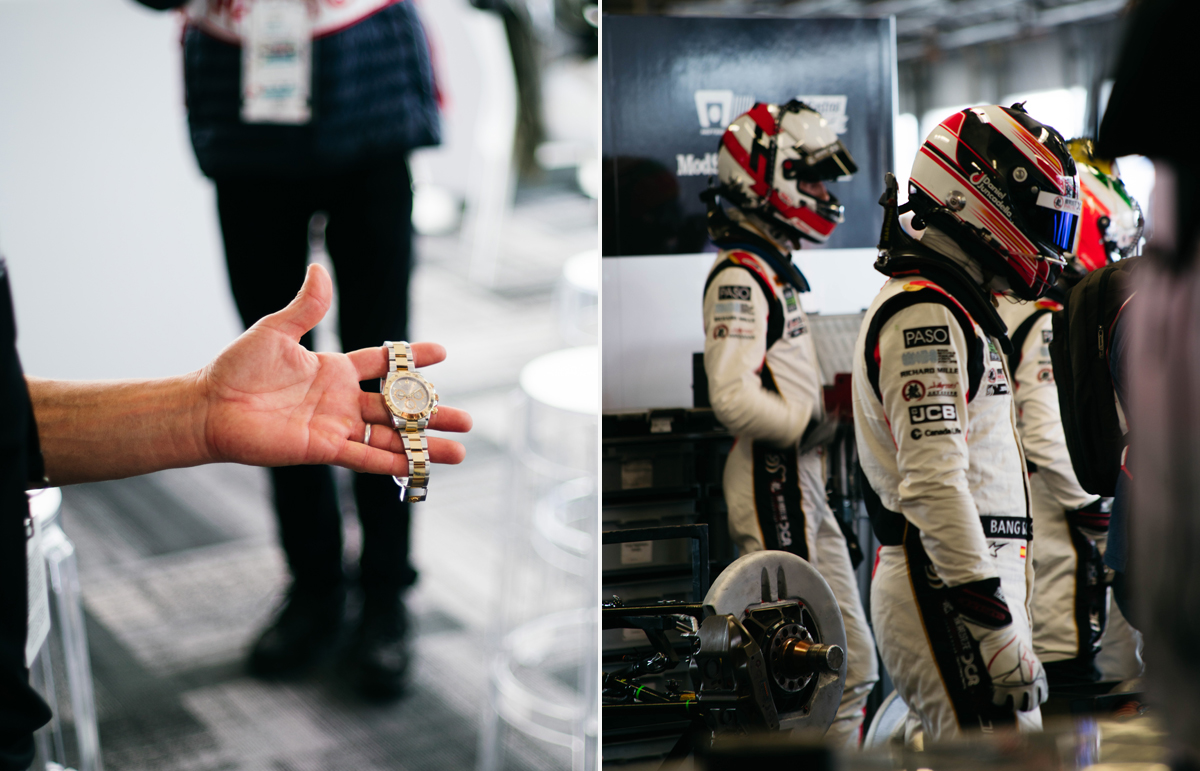85 Years of Rolex at Daytona International Speedway
A longtime partnership begetting plenty of historic car-racing moments
by Andrew Maness
When Daytona International Speedway opened in 1959 a new era of American racing began. In 1962 that era gained its most grueling and prestigious race: the Rolex 24. This 24-hour endurance race is a star-studded event that demands the best of its competitors who are all aiming to add their name to the history books—leaving with a trophy in hand and a Rolex Daytona on their wrist.

Drivers who top the field in each of the three classes receive an engraved Oyster Perpetual Cosmograph Daytona and as 2008 Rolex 24 winner Dario Franchitti tells CH, “Always great to win, but really we all want that damn watch.”

The fact that a luxury Swiss brand became intrinsically linked with racing in Florida may seem like a stretch, but the association between Rolex and Daytona Beach goes all the way back 85 years to February 1933. It was then that Sir Malcolm Campbell set a land speed record of 272.46 MPH (which he would break two years later) in what was the most streamlined and aerodynamic version of his mighty Bluebird racer, with a Rolex Oyster on his wrist. He had been wearing the watch in years prior, but this was his greatest accomplishment in Daytona with the new car. As far as why Daytona was a destination for racers in the first place, Sir Campbell summed it up simply saying, “Daytona Beach, Florida is the only place I know where it is possible to make world’s land-speed records. The sand packs almost as hard as cement, and there is sufficient length to get up speed.”

Sir Campbell went on to become the first male athlete with a Rolex endorsement (the first athlete altogether was Mercedes Gleitze, the first British woman to swim the English Channel) and though he refused to take their money, images of him were used in many Rolex advertisements. He paved the way for the future Rolex ambassadors in the world of racing like Jackie Stewart and Scott Pruett, both of whom have come out on top at Daytona multiple times. Pruett, who retired following this year’s Rolex 24, told us, “Daytona is special because it is especially challenging and the reward is unique.”

While the simple explanation behind the Rolex 24 at Daytona is 24 hours of intense competition, words don’t entirely do it justice. Motorsport—perhaps especially this race—is meant to be seen, heard, felt and smelled. The Rolex 24 is sensory overload in the best possible way and even if you’ve never been near a race track, it’s an experience worth checking it out.

Appreciating what Daytona was leads to more fully appreciating what Daytona is now. The reverence for the history here cannot be overstated, it’s written on all the faces in the crowd and in the pits. From elderly multi-year attendees who walk around wide-eyed as though they’re visiting for the first time, to team owners who let their emotions pour out when the checkered flag waves, it’s easy to see how much this race means to people. And the partnership between Rolex and Daytona, and the long history make it an even richer experience.
Take a look at the gallery above for some extra insight.
Images by Andrew Maness






























